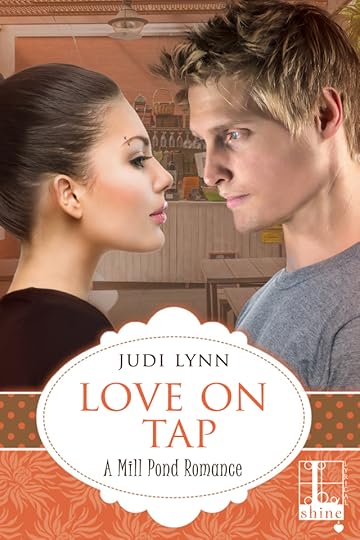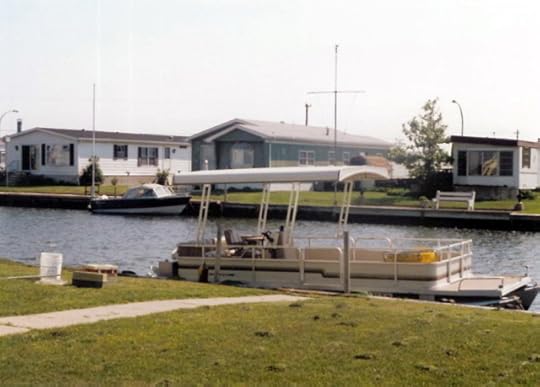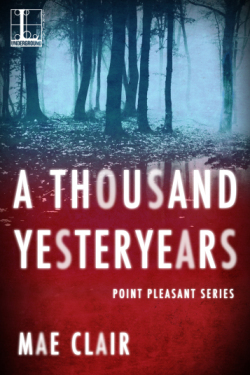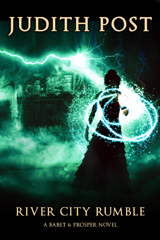Judith Post's Blog, page 107
May 5, 2016
A quick mystery short story
Just to let you know, I posted a second, quick mystery on my webpage. I’m just playing with ideas, trying to get to know Jazzi and her cousin, Jerod, a little better. Hope you like it. http://www.judithpostswritingmusings....



May 3, 2016
Cover Reveal
I’m late sharing the cover reveal for my third romance, LOVE ON TAP. I’m new to having a publisher, and Kensington planned an entire cover reveal tour, which is awesome! They even wrote the blurb for the book–something a hundred times better than I’d have thought up. Not my strong point. Maybe that’s why they did it???[image error] Anyway, if you’re interested in the blogs that will show the reveal, or the blurb, here’s the info: http://bit.ly/1SOW401 I feel like a newbie, because I didn’t realize the reveal date–April 29–was in the same link as the cover, so I’m behind. But here it is now. Paula and Chase. Hope you like it! The book comes out in November.



April 30, 2016
Writing: Fishing for Ideas with Mae Clair
When I first started writing, I had more ideas than I knew what to do with. The thing I discovered, though, is that not all ideas are created equal. Some can carry a short story, some die if you try to write more than 10,000 words, and some sag under the weight of a novel. My friend, Mae Clair, wrote a witty blog post about which plot ideas to keep and which to toss back. Mae’s suspense novel came out on Tuesday, and I’m halfway through reading it. Thank goodness she heard the legend of the Mothman and used that as an idea for a mystery–more than enough heft to support an absorbing plot line. I’m loving it! So, here’s Mae to help us decide which ideas are keepers. And happy fishing!

Fishing for Plots by Mae Clair
Hello and many thanks to Judith for inviting me to be a guest on her blog! I’ve come equipped with a writing topic today that relates to various types of plots.
Early in our marriage, my husband introduced me to flounder fishing. That attachment eventually evolved into crabbing, clamming, and a long stretch of boat ownership, but in the beginning, it was all about catching the coveted flounder.
I’d never been fishing in my life the first time he took me out. I learned early on there were several types of fish and sea critters apt to go after the bait I dangled into the water, but not all were desirable. Recently, I started thinking about fish in terms of plot. Sound crazy? Let me put it in perspective:
Junk Fish
When you’re fishing for flounder, just about everything else falls into the category of “junk fish.” The most common junk fish we’d hook were sea robins. These guys are never going to win a beauty contest. They’re prehistoric-looking with legs, spines that inject poison, and wing-like fins. They also croak like a frog and will complain loudly when caught. I always thought they had pretty blue eyes, an opinion not shared by my husband.
Junk plots are much the same. Pull one from your writer’s hat and you quickly realize no matter how you tweak it, you can’t make it work. It might have some redeeming value (like the sea robin’s pretty blue eyes) but, in the end, all you can do is toss it back into the plot bin and fish for another.
Hard Shell Crabs
You’d be surprised how many hard shells go after a fishing line. In the beginning, we considered them a nuisance (they make nasty work of your bait). Then we realized we could steam them and have stuffed flounder. After that, any (legal) hard shell that wandered onto our lines was fair game. It wasn’t long before we were baiting and setting crab pots, collecting them in earnest.
Hard shell crabs are the plots that start out looking hopeless, but with polish and attention turn into gems. It takes some work to get them to that point, but when you do, they’re golden!
Sand Sharks
These guys rarely got snagged in the bay. When they did they were (thankfully) on the small side. My husband once caught one that was about eighteen inches. When they’re that size, they bedazzle, flashing bright silver in the sun. Very pretty.
You know this plot, right? The one that beguiles you with possibility. You’re enraptured by it, treating it like a prized jewel—until you realize it can’t be manipulated to fit your needs. It blinds you with its beauty, but once you return to writer terra-firm, it becomes fool’s gold. Back into the plot bin it goes.
Flounder
There was always a lot of excitement when we hooked a flounder. It’s why we’d spend 5-6 hours tooling around the bay, burning in the sun, maneuvering through channels and getting swamped in bigger wake.
Flounder is the ideal writer’s plot. Perfection. Oh, you might have to filet it to work it the way you want, but you know you’ve got a winner as soon as you hook it.
I haven’t been flounder fishing in many years now, but I remember those times with extreme fondness. Twenty years of boating results in a lot of tale—and a lot of fish!
Here’s hoping you find more flounder than sea robins when you go fishing for plots. How do you think my comparisons stack up?
While you’re considering, I hope you’ll take a look at my newest book, A THOUSAND YESTERYEARS, a mystery/suspense novel combining history, urban legend and fiction.

Here’s a look at the blurb:
A THOUSAND YESTERYEARS
Behind a legend lies the truth…
As a child, Eve Parrish lost her father and her best friend, Maggie Flynn, in a tragic bridge collapse. Fifteen years later, she returns to Point Pleasant to settle her deceased aunt’s estate. Though much has changed about the once thriving river community, the ghost of tragedy still weighs heavily on the town, as do rumors and sightings of the Mothman, a local legend. When Eve uncovers startling information about her aunt’s death, that legend is in danger of becoming all too real…
Caden Flynn is one of the few lucky survivors of the bridge collapse, but blames himself for coercing his younger sister out that night. He’s carried that guilt for fifteen years, unaware of darker currents haunting the town. It isn’t long before Eve’s arrival unravels an old secret—one that places her and Caden in the crosshairs of a deadly killer…
A THOUSAND YESTERYEARS is available from:
Amazon
http://www.amazon.com/Thousand-Yesteryears-Point-Pleasant-ebook/dp/B0138NHJ4A
B & N
http://www.barnesandnoble.com/w/a-thousand-yesteryears-mae-clair/1122454905?ean=9781601837776
Kobo
https://store.kobobooks.com/en-us/ebook/a-thousand-yesteryears
Google Play
https://play.google.com/store/books/details/Mae_Clair_A_Thousand_Yesteryears?id=kY9KCgAAQBAJ&hl=en
iTunes
https://itunes.apple.com/us/book/a-thousand-yesteryears/id1050516745?mt=11
Kensington Publishing
http://www.ekensingtonbooks.com/book.aspx/32298

Author Bio:
Mae Clair has been chasing myth, monsters and folklore through research and reading since she was a child. In 2013 and 2015, she journeyed to West Virginia to learn more about the legendary Mothman, a creature who factors into her latest release.
Mae pens tales of mystery and suspense with a touch of romance. Married to her high school sweetheart, she lives in Pennsylvania and numbers cats, history and exploring old graveyards among her passions. Look for Mae on her website at MaeClair.net where you can sign-up for her newsletter.
Connect with Mae Clair at the following haunts:
Website
Blog
Twitter (@MaeClair1)
Google+
Facebook Author Page
Amazon Author Page
Sign up for Mae’s newsletter:
Newsletter Sign-Up


April 25, 2016
Things Can Always Get Worse
I like to think of myself as a nice person. True, I don’t mind killing people in my stories, but most of them deserve to die, and that’s part of tension and conflict, right? We’ve all heard over and over again that things must always get worse for our poor protagonist. If his victories come too easily, readers yawn. Hell, newspapers are filled with dire events. Fiction has to have more drama than fact, doesn’t it? At least, we have to feel it more.
But I have to admit, I’m a little surprised at myself. I’ve been working on the Mill Pond romance series. The first book, because I wasn’t sure if I could write romance, has a healthy dose of humor. It made me more comfortable with the boy/girl stuff. I sort of fell in love with Harmony and Brody in the second romance, and I wanted Brody to be the brooding, not-so-silent type. He has a way of saying what no girl wants to hear. You have to remember, I fell madly in love with Natty Bumppo in middle school. While my friends read romances, I read about pioneers. These guys were a little overly reticent, way too practical. They weren’t in touch with their feelings. They’d rather keep their scalps. Brody brought back memories of the strong, silent type who managed to say the wrong thing when they did finally open their lips. A little too outspoken.
In the third romance, I wanted to push the envelope a little and have a heroine who wasn’t the standard pretty girl. Paula’s a chef with tattoos, a stud, and two kids. She’s smart, practical, but has terrible taste in men. I tried to show how hard it is to juggle a career with motherhood and find time to meet Mr. Right. Of course, with Paula, first, she falls for Mr. Why-in-the-world Would You Go There? Not only did she need to meet somebody wonderful–which Chase is, she needed a true, honest friend to steer her in the right direction. And that’s where Tyne came in. He’s her hot fellow chef who has no problem speaking his mind and still charming you. In my plot points, Tyne is a minor character, but when I wrote him, he leapt off the page for me. It was as if he was born whole, like Athena, who stepped out of Zeus’s head in full armor. I fell instantly in love with Tyne. So do most women. He has to fight them off.
So, why, in book four, do I give one of my all-time, favorite characters such a hard time? That wasn’t my intention. I started his book all happy and upbeat. The thing about Tyne, though, is that he feels so REAL to me that when he hits the skids on his way to his big, black moment, I felt it. And since I suffered for him, unfortunately for him, he felt it even more. So did my poor husband. When Tyne was unhappy, that made me unhappy, and you know the saying—happy wife, happy life. For poor John, when I hit my gloomy chapters, the saying switched to unhappy wife, unhappy life. That darn Tyne actually affected my moods. That’s when John goes to the hardware store:)
I’d like to say that when Daphne became so depressed, she couldn’t eat, the same happened to me. I might lose weight that way. But instead, I overcompensated and ate enough for both of us. Don’t ask. Anyway, I was a bit taken aback when I beat up one of my favorite characters more than I do most. But no fear. I’m writing romance. A happy-ever-after is soon in the offing…after Tyne and Daphne suffer enough.
webpage: http://www.judithpostswritingmusings....
Facebook: https://www.facebook.com/JudithPostsu...
twitter: @judypost


April 21, 2016
For Fun
I posted a short mystery story on my webpage. The characters have been bugging me. So has the idea. So I wrote it. Hope you enjoy it.
http://www.judithpostswritingmusings.com/



April 16, 2016
Writing: Why don’t you try . . .?
When I first started writing, I only wrote short stories, and most of them were a bit bizarre. They didn’t quite fit any genre, so the majority of them ended up in a file cabinet in our basement. They’re still there. I don’t want to read them. I don’t want to know how bad I was when I thought I was pretty good:) I sold enough of them to small chapbooks, though, that I tried magazines and anthologies and sold to them until someone at my writers’ group finally asked, “Why don’t you try a book?”
So I did. I was drawn to mysteries with sturdy plot lines built into them. I had a structure to follow, but books are LONG. My first attempt fizzled at 20,000 words, but Penny Paper Novels in Baltimore was buying “short novels” to print in newspaper form and sell at airports as quick reads. The editor bought GOURMET KILLINGS and then STING OF DEATH, at 25,000 words. I finally learned how to do plot lines and character wheels and finished a 60,000 word mystery.
“Why don’t you try selling it?” a fellow writer asked. So I sent to editors at every publishing house who’d take unsolicited manuscripts (they almost all did back then), and I got wonderful rejections–even though no one was buying cozies back then. That’s what I knew how to write, though, so I wrote more until I sent one to Anna Genoese, who was at Tor at the time, and she said, “I’d love to see an urban fantasy from you. Why don’t you try one?”
So I did. And I sent her one she liked and wanted to buy, but someone had recently sold Tor a novel too similar to mine, so she had to pass. And then she left Tor, but I’d been working on a paranormal mystery for her and had no idea what to do with it. I sent it to an agent, and she liked it enough to make me a client. I’d fiddled for so long, though, the urban fantasy market was crowded, so Lauren said, “Why don’t you try a romance?”
So I did. And Kensington liked COOKING UP TROUBLE. And I learned that I like writing romance. I’m not suggesting that anyone else follow my route of trial and error, but I am suggesting that stepping outside of your comfort zone isn’t the worst thing that can happen. I learned every time I tried something new. I learned from writing short and concise. I learned from writing long. I learned every time I tried a new genre. Whatever and however your writing journey goes, I hope you enjoy the trail.
webpage: http://www.judithpostswritingmusings....
Facebook author page: https://www.facebook.com/JudithPostsu...
Twitter: @judypost


April 13, 2016
Fangirl moment
I need to pinch myself. USA Today HEA did an interview with me for COOKING UP TROUBLE. THAT was a big enough moment for me, but one of the questions was “What three romance writers do you fangirl about?” I don’t fangirl very often. I like to think I’m too practical, but I mentioned Nora Roberts–that woman can hang anything on a romance and make it work, Sarah Addison Allen–I love how lyrical her writing is, and Catherine Bybee–because she mixes it up and surprises me with what she adds to her romances. And then I snuck in my friend Julia Donner–because I honestly think she writes some of the best male characters I read. It was a fun interview. I felt all giddy when I saw it on the USA Today site this morning. But then, EVEN BETTER, Catherine Bybee retreated it and mentioned me on her twitter page. Catherine Bybee herself!! I’m going to float for the rest of today:)
If you’re interested, here’s the interview:
Interview: Judi Lynn, author of ‘Cooking Up Trouble’


April 9, 2016
Writing:the most important thing to remember…
Every once in a while, I get caught up in all the CLUTTER of writing. I check my numbers–how many followers do I have on twitter? for my webpage and blog? On my author Facebook page? What are my books’ rankings? Did I post something for 2bitTues and 1lineWed? Did anyone retweet it? And don’t get me wrong. Those things do matter. An author has to let readers know her book’s out there, available, or it can get lost in the shuffle. But the bottom line is, every author has to write the next book, and the next book has to be as good or better than the last one. And the only way to do that…is to WRITE.
I’m a firm believer in butt in chair. People sometimes ask me, “Where do you get your inspiration?” And the truth is, more mornings than not, I don’t have any. I grab my coffee, plant my fanny in my chair, and read whatever I was working on the day before. Also, more often than not, what seemed brilliant to me on Tuesday sounds like crap on Wednesday. That’s why I spend every morning doing rewrites. That, and the fact that working on the previous day’s scribbles gets me back into the story, and hopefully, the words for the next scene will start flowing. That usually works. Not always. There are days when I fight with one paragraph, run dry, and then go for a cup of coffee. I write another paragraph or two, and go for another cup. There are days that, by rights, I should float out of the house with all the fluids I’ve consumed. Those are the days when the words come to me in fits and the flow never happens. But I’m convinced those types of scenes are just plain tough, and they’d never come easily, no matter how much a Muse sprinkled me with magic dust.
Some scenes just plain suck to write. When a character’s reached a turning point or I’m trying to SHOW instead of TELL, but the whole thing hinges on subtleties . . . those are my high intake coffee days. If I take time off, or let the scene “stew” for a few days, sometimes it helps. Sometimes, it doesn’t. But I’ve come to believe that if I make myself write everyday, my brain knows there’s no wiggle room. It has to deliver. It’s sort of like working out. If you take time off, it’s harder to get back in gear. Part of writing, for me, is just plain habit.
The more you do something, the better you get at it–if you want to improve. I suppose a writer could just regurgitate the same thing, day after day, but even then, it will become easier to produce the pages you need, whether they challenge you or not.
When new writers ask me, “What’s the most important thing I should do?”–I answer, “Just write.” There’s plenty of advice out there that will help you learn faster, but that’s like reading a book or watching videos to teach you tennis. The pointers will help you, but to get good at anything, you have to DO it. Over and over again. A lot of new writers are looking for a magic bullet, something that will make them great writers overnight. Good luck with that. I don’t think it exists. So the most important thing, I think, is butt in chair. The more you write, the better you’ll get. Just Do It.


April 4, 2016
River City Rumble is up!
April 2, 2016
Images and Inspiration
I wrote a short novel and put it on my webpage, one chapter at a time. I expected to have River City Rumble pulled together and online at Amazon by now. Only, I’ve never had to format any of the novellas and novels I write. Michael Prete designs the covers, and I love them! Sharon Pelletier at Dystel and Goderich formats them for me, and I love that, too! I’ve been spoiled, so I didn’t think twice about sending her what I’d merged. What I didn’t stop to consider was that I put an image at the beginning of every chapter. I thought they added a unique flavor to the book. They did! BUT, they’ve been a pain for Sharon to format for Amazon. And I feel really sorry about that. I didn’t mean to make extra work for her. She didn’t want me to yank them, though, so hopefully, the entire manuscript, put together, will go online next week. And Sharon deserves a medal.
I don’t know how many of you have searched for images for your books/stories, but that’s a process in itself. I didn’t stay true to solid marketing for my urban fantasies. If you go to bookstores, my covers are off the mark. My favorite urban fantasy authors all have heroines on the covers who look like warriors. Ilona Andrews has Kate Daniels with her sword. Faith Hunter has Jane Yellowrock in black leather. And Patricia Briggs has Mercy Thompson with her tight abs and tattoos. Their images say “Don’t mess with me.” But I wanted covers that connected more with the stories I told. That’s how I chose the images for all of my Babet and Prosper novellas. When I finally gathered them into bundles, though, I realized I was doing it wrong. So I looked for images that would fit my two characters. That’s no easy task either.
I finally found an image that fit my idea of Babet–long, unruly, dark hair. A wand to show she’s a witch. All I could find for Prosper was great bodies. Not one face fit the Prosper whom I see in my mind. So sadly, Prosper was reduced to a wonderful torso, because no matter how many men I looked at on the royalty-free sites, none of them were the wonder I imagine when I think of him. Finding a gargoyle to portray Damian in my Wolf’s Bane novels proved impossible. A fallen angel for my Enoch series? Forget about it. And no one could capture Tyr in Empty Altars.
Patricia Briggs did an interview recently in which she talked about writing urban fantasy, and she explained what she thought a good book cover should offer. It’s about halfway or more down the Q&A column, but worth reading. https://www.goodreads.com/interviews/...
A good cover can sell your book. It’s a marketing tool, worth thinking about. If you self-publish, the image has to come from a site where you can buy one, royalty free. The cover needs to give a reader the feel of the genre you’re writing, the tone of the story, and tie novels together if you’re working on a series. Choose wisely. I love mine, but I didn’t follow the rules. You should.
When I signed with Kensington, the publisher chose the covers for the books, and that proved interesting, too. Publishers think about marketing. They think about how readers will react when they look at your book. Will the cover pull them in? What emotion will it convey? Will the cover make them pull the book off the shelf and read the blurb, maybe glance at a few pages?
Here’s the cover Michael Prete designed for River City Rumble. He did exactly what I asked for. It fits the story–the battles that escalate as the story progresses. I love it. Would a publisher use it? Probably not.

Webpage: http://www.judithpostswritingmusings....
Author’s Facebook page: https://www.facebook.com/JudithPostsu...
Twitter: @judypost







